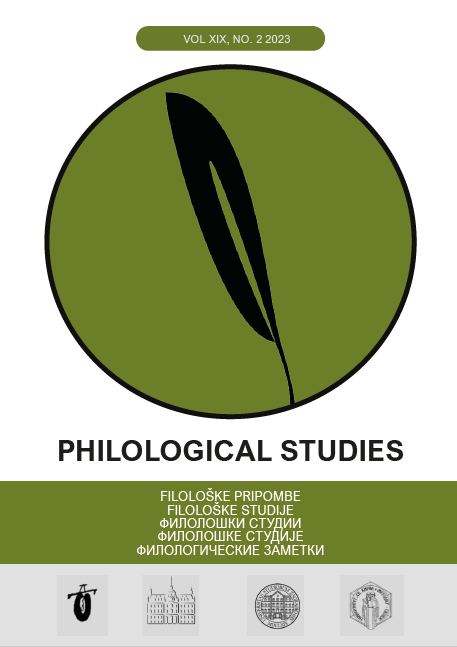HISTORICAL MEMORY OF THE BYZANTINE EMPRESS THEODORA AS A BASIS FOR INSPIRING REFLECTION IN LITERARY CREATIVE DISCOURSE
Abstract
This paper comparatively traces the transmission from the chronographic records in the Secret History, left by the Byzantine chronicler of the 6th century, Procopius of Caesarea, to the literary-creative discourse in the instance of writing the novels Theodora and The Purple Robe by the English author Stella Duffy. The goal is to interpret the character of the Byzantine empress Theodora mainly through a gender perspective. Research shows that this empress, through her individualism, clear mind, courage and obvious leadership abilities, managed to ascend from the margins of society to sitting on the throne next to the Byzantine Emperor Justinian I.
This is exactly how this Byzantine empress has been preserved in the historical memory, representative and inspiring enough to be reflected in the literary - creative discourse of the author Stella Duffy. In the paper, we will make a detailed observation of the reign of this Byzantine empress, whose character incorporates real leadership attributes, atypical for the period in which she lived, while on the other hand, we also perceive and analyze the germs of feminist theory in that very same character.
Downloads
References
Ангеловска-Панова, М. (2010) Религиските формации и родовите идентитети [Religious formations and gender identities], Скопје : Селектор [Selector],
Велев, И. (2005) Византиско – македонски книжевни врски [Byzantine - Macedonian literary connections], Скопје : Авторско издание [Author's edition],
Дафи, С. (2021) Теодора [Theodora], Скопје : Матица [Matica],
Дафи, С. (2021) Пурпурната наметка [The Purple Shroud ], Скопје : Матица [Matica],
Дил, Ш. (1927) Византиске слике I [Byzantine paintings I] , Београд : Српска књижевна задруга [Serbian literary cooperative],
Кесариски, П. (2008) Тајната историја [The secret history]. Скопје : Ѓурѓа [George].
Коев, Т., Бакалов, Г. (1992) Въведение в християнството [Introduction to Christianity], София : Булвест [Boulevard],
Оболенски, Д. (1991) Византијски комонвелт [Byzantine Commonwealth], Просвета [Education] – СКЗ,
Серафимова, А.,Поповска-Коробар, В., Тричковска, Ј. , Машниќ, М. М. (2009) Христијански споменици [Christian monuments], УНЕСКО : Венеција и Управа за заштита на културното наследство [Administration for the Protection of Cultural Heritage],
Старделов, Г. (ур.), (2010/11) Ликовната уметност на почвата на Македонија од IX до крајот на XIX век [Fine art of the soil of Macedonia from the 9th to the end of the 19th century], кн. 20-21, МАНУ [Macedonian Academy of Sciences and Arts],
Brubaker, L. (2006) Gender and Society. The Age of Justinian, ed. By Michael Maas. Camridge University Press,
Cormack, R. (2003) Byzantine Art, Oxford : Oxford University Press,
Evans, J.A. (2005) The Emperor Justinian and the Byzantine Empire, Greenwood Press,
Evans, J. A. S. (2000) The Age of Justinian, Rotledge,
Herrin,J.(2000) The Imperial Feminine in Byzantium. Past and Present No. 169. Oxford University Press,
Hillner,J.(2007) Monastic Imprisonment in Justinianʼs Novels. Journal of Early Christian Studies 15/2. The Johnson Hopkins University Press,
James, L. (2009) Men, Women, Eunuch : Gender, Sex and Power. A Sosial History of Buzantium, ed. By J. Haldon. Blackwell,
Janson, J. W. (1975) Vizantiskaumetnost,Istorijaumetnosti(pp. 169-183), Jugoslavija,
McClanan, A. (2002) Representations of Early Byzantine Empresses, Palgrave Macmillan,
Rodley, L.(1996) Byzantine Art and Architecture: An Introduction, Cambridge University Press,
Copyright (c) 2023 Marija Brndevska

This work is licensed under a Creative Commons Attribution-NonCommercial-NoDerivatives 4.0 International License.
Philological studies © 2019. This work is licensed under a Creative Commons Attribution-Noncommercial-No Derivative Works 3.0 Unported License










